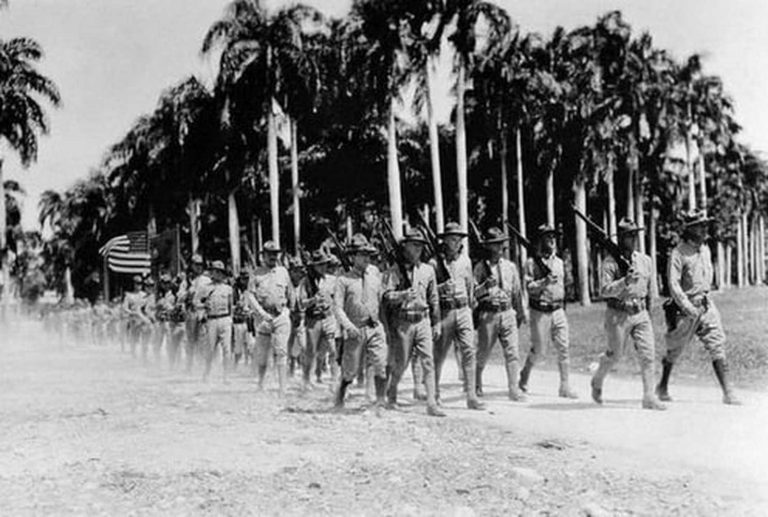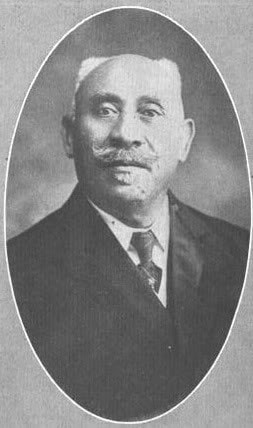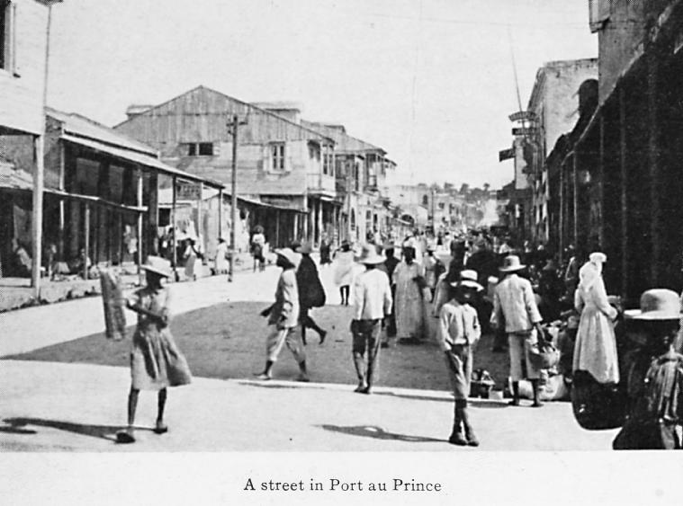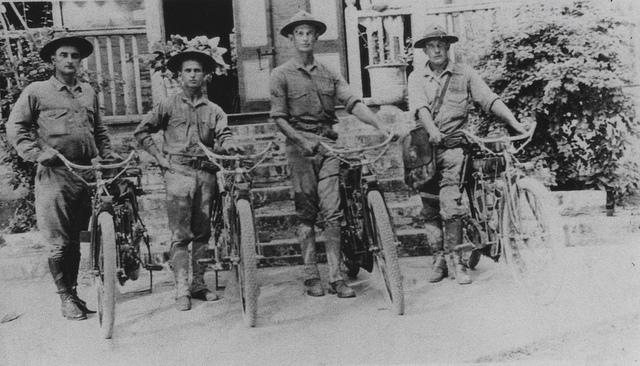u.s. occupation of Haiti
Beginning on July 28, 1915, over three hundred United States Marines were ordered to invade Port-au-Prince, Haiti following a coup and the lynching of President Jean Vilbrun Guillaume Sam. This action by President Woodrow Wilson would begin the 19-year-long occupation of the small island nation of Haiti, which had been independent for over 100 years.
|
Under the guise of restoring peace to the nation, the United States replaced coup leader and current president, Rosalvo
Bobo, with a puppet government led by Philippe Sudré Dartiguenave. The Wilson administration submitted a convention to the Haitian government in order to establish the terms of the occupation. In this convention, it was stipulated that:
This convention was ratified by the United States in September 1915. After the United States entered World War I, relationships between Haitians and American forces deteriorated because qualified senior Marine officers were sent to fight in Europe which led to the appointment of uneducated junior officers in leadership positions. |
In 1918, a new constitution was approved by the Haitian people after President Dartiguenave dissolved the legislative body. The constitution was drafted by Assistant Secretary of the Navy, Franklin Delano Roosevelt, and while it was a fairly liberal document, it did allow for foreign land ownership, something that had been made illegal by the first leader of Haiti following the revolution, Jean-Jacques Dessalines.
Following the end of WWI, the United States continued to occupy Haiti despite President Wilson's support of self-determination and sovereignty.
Following the end of WWI, the United States continued to occupy Haiti despite President Wilson's support of self-determination and sovereignty.
|
In the fall of 1919, reports became more critical of the occupation of Haiti after it was discovered that the operation was strictly censored and the American press was not accurately representing the situation. American attitudes towards the occupation worsened even further following the release of an NAACP report by James Welson Johnson in 1920 titled "The Truth about Haiti: An NAACP Investigation." His investigation and subsequent articles in The Nation described the corruption, forced labor, press censorship, racial segregation, and violence that was prevalent in Haiti.
Following public outcry, the Senate Committee of Foreign Relations was created in order to investigate the occupation of Hispaniola. The committee returned on December 21, 1921 and deteremined that President Harding should keep the Marines on the island and believed that "the diplomatic representatives and naval forces of the United States made it possible for the Haitian Assembly to sit in security." |
In 1922, Louis Borno was elected as the next president of Haiti, and General John Russell, Jr. was appointed as High Commissioner. The Borno-Russell Government built 1000 miles of road, established a telephone exchange, modernized port facilities, and improved public health facilities. But it was also under Commissioner Russell that many of the abuses against the Haitian people occurred. He was charged with 10 counts of unconstitutional and illegal conduct by the Haiti-Santo Domingo Independence Society for use of military force in enforcing the Constitution of 1918, which allowed for foreigners to have the same rights as Haitians in the courts, for foreigners to own land, and for all acts under the occupation to be ratified and legalized, therefore making it impossible for Haitians to bring charges for crimes committed by Marines.
There was substantial backlash from the American people and government officials against the Select Senate Committee's final report due to its findings that the claims of torture and abuse of power against the United States were unsubstantiated.
There was substantial backlash from the American people and government officials against the Select Senate Committee's final report due to its findings that the claims of torture and abuse of power against the United States were unsubstantiated.
Controversies surrounding the occupation of Haiti continued throughout the 1920s, and in 1929, President Herbert Hoover appointed W. Cameron Forbes as the head of a commission to investigate the internal affairs and conditions in Haiti. The commission found that many of the criticisms and claims against the occupation in 1920 were true, and it recommended that Hoover begin a nine-step plan to pull out of Haiti. In 1933, President Franklin D. Roosevelt adopted the "Good Neighbor" policy and stated that "The definite policy of the United States from now on is one opposed to armed intervention." U.S. Marines withdrew from Haiti in 1934, and the treaty over customs houses expired May 3, 1936.
Life under U.S. Occupation
The U.S. occupation under the Wilson Administration was marked by miscommunication, lack of direction, and hostility. The management of the intervention was pushed to the side with the entrance of the U.S. into World War I, and this negligence led to inquiries and investigations, as well as the riots of 1918-19.
Following the 1922 Senate Inquiry into Haiti and Santo Domingo, a massive reorganization effort was undertaken to eliminate the initial failures of the occupation. Unfortunately, these efforts did nothing to combat racism, put an end to American elitism, or address the concerns of Haitians. The continued mismanagement of the occupation eventually led to strikes and riots in 1929. These protests marked the turning point for seriously setting in motion plans for American withdrawal. American forces officially withdrew from Haiti August 15, 1934.
The U.S. occupation under the Wilson Administration was marked by miscommunication, lack of direction, and hostility. The management of the intervention was pushed to the side with the entrance of the U.S. into World War I, and this negligence led to inquiries and investigations, as well as the riots of 1918-19.
Following the 1922 Senate Inquiry into Haiti and Santo Domingo, a massive reorganization effort was undertaken to eliminate the initial failures of the occupation. Unfortunately, these efforts did nothing to combat racism, put an end to American elitism, or address the concerns of Haitians. The continued mismanagement of the occupation eventually led to strikes and riots in 1929. These protests marked the turning point for seriously setting in motion plans for American withdrawal. American forces officially withdrew from Haiti August 15, 1934.
Based on an article written by Ashley Botkin, Woodrow Wilson Presidential Library & Museum



